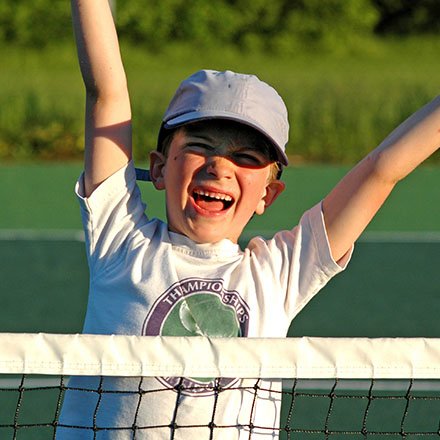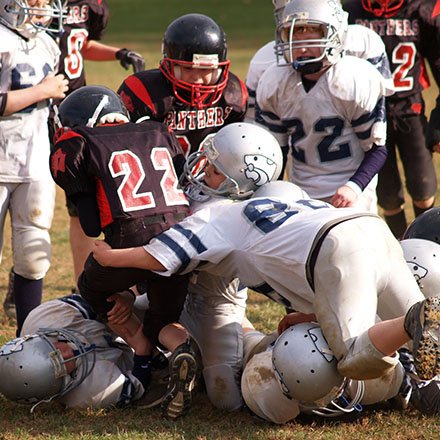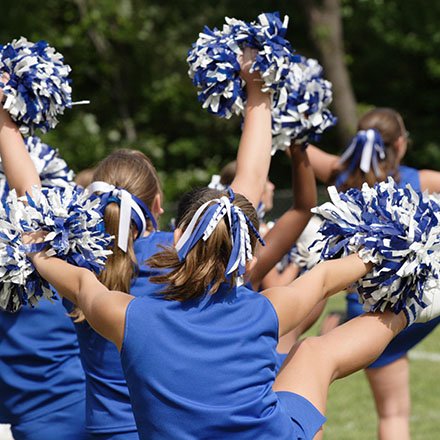Saddened by Recent Tragic Events
By Wayne B. Moss
“I can’t breathe …”
Those were the last words of George Floyd. With everything that is happening in our country, it’s hard for me to catch my breath. COVID-19. Ahmed Aubrey. Christian Cooper. Disregard for decency and human life. This year everything has been turned upside down.
NCYS stands with George Floyd. We run with Ahmed Aubrey. We bird watch with Christian Cooper. Dr. Martin Luther King once said, “Injustice anywhere, is a threat to justice everywhere.” We stand for social justice in every arena. We hear your cries for fairness and decency. We all must listen, too.
Youth sports is one of the places where people from various backgrounds can interact, leave their biases aside and just have fun. It’s the perfect environment to address injustice. Youth sports, too, stand at a crossroads of social injustice between the haves and have nots. At the intersection are participation, access, and inequity.
Some families are spending thousands of dollars each year on sports participation. Other families do not have the means to do so. Following COVID-19, those without the means will likely be hit harder with budget cuts to local park & recreation budgets and closures of organizations that may have picked up the slack. According to the Aspen Institute, youth sports participation dropped from 45 percent in 2008 to 38 percent in 2014 following the Great Recession.
Yet, all youth will be impacted by COVID 19. Youth sports provide numerous outcomes for young people including physical, social, emotional and cognitive benefits. Sports are a protective factor for youth athletes. Youth participating in sports are more likely to graduate from high school and are less likely to participate in risky behavior. According to former Surgeon General Richard Carmona, today’s youth comprises the first generation that may not outlive its parents. Beyond health care costs and life expectancy, physical inactivity among youth impacts national security as well. According to the Pentagon, 27 percent of young Americans are too overweight to qualify for military service. The Defense Department reports spending $1.5B annually to replace unfit personnel.
Yet, there’s a view that youth sports is merely fun and games. Not only do sports get our youth prepared for adulthood with conflict resolution and leadership skills, it is the cornerstone for many families that organize their lives around their children’s participation. Youth sports provide a gathering place for communities. It is truly an American institution.
Rep. Max Rose (D-NY) introduced the COVID–19 Youth Sports and Working Families Relief Act to help families and maintain this institution. There are some who question if this is the time for relief. Others believe we should let it all come crashing down. Let the free market dictate what happens from there they say. You can choose to Take Action and let your elected officials know you support youth sports.
Youth sports needs saving. And yes, the youth sports system needs overhauling. This is the time to debate how we do that. We should debate. We should engage in a healthy conversation about how to make sports accessible for all youth. We should debate how we ensure youth sports are safe. We should debate how to ensure young people have fun and it’s a quality experience. We should all be singularly focused on ensuring the outcomes for all youth sports participants are available.
We may disagree on a number of things. However, we can all agree that youth sports are not a luxury. A study of women executives by research firm Catalyst (2012) revealed that 82% of female executives participated in sport. Some 60% credited sport participation with helping them nurture a competitive nature. Girls from lower socio-economic groups and girls of color encounter an array of challenges to accessing youth sports opportunities including fewer resources, fewer programs and less safe play spaces.
Not long ago, young people would participate in unstructured games during their free time. The games would naturally enhance children’s fundamental movement skills and teach them problem-solving and conflict resolution skills. Today, however, unstructured play has been replaced by competition that is adult organized and led. We need to find ways to provide youth voice, offer neighborhood play, promote multi-sport play, train our coaches and ensure all play takes place with youth development principles and in a safe environment.
Many want to go back to normal. However, we will not go back to life as we knew it. We will create our new normal or it will default to a new normal. Now is the time for cross-sector collaboration with policymakers, federal, state and local governments, school administrators, national and local community-based organizations, the United States Olympic Paralympic Committee, National Governing Bodies, pro sports leagues, the NCAA, corporate brands and foundations to ensure all young people develop physical literacy, increase positive physical activity attitudes, and enhance developmental skills that put them on the path to a lifetime of physical, social and emotional well-being.
Now is the time to invest in our young people.
Wayne B. Moss is the Executive Director of NCYS




